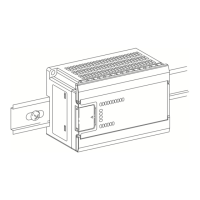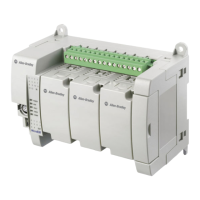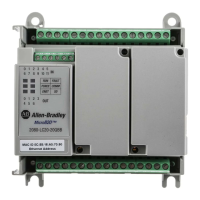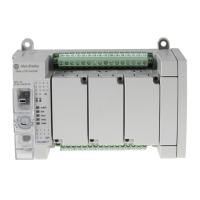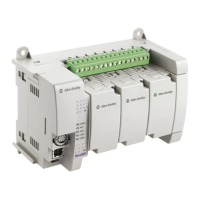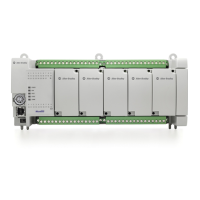Publication 1763-UM001E-EN-P - June 2015
Connecting to Networks via RS-232/RS-485 Interface 205
DH-485 Communication
Protocol
The DH-485 protocol defines the communication between multiple devices
that coexist on a single pair of wires. DH-485 protocol uses RS-485
Half-Duplex as its physical interface. (RS-485 is a definition of electrical
characteristics; it is not a protocol.) RS-485 uses devices that are capable of
co-existing on a common data circuit, thus allowing data to be easily shared
between devices.
The DH-485 network offers:
• interconnection of 32 devices
• multi-master (peer-to-peer) capability
• token passing access control
• the ability to add or remove nodes without disrupting the network
• maximum network segment of 1,219 m (4,000 ft.)
The DH-485 protocol supports two classes of devices: initiators and
responders. All initiators on the network get a chance to initiate message
transfers. To determine which initiator has the right to transmit, a token
passing algorithm is used.
Control of message transfers on the DH-485 network is performed by rotating
the token along the nodes on the network. A node holding the token can send
a message onto the network. Each node is allowed a fixed number of
transmissions (based on the Token Hold Factor) each time it receives the
token. After a node sends a message, it passes the token to the next device.
The allowable range of node addresses is 1 to 31. There must be at least one
initiator on the network (such as a MicroLogix controller, or an SLC 5/02 or
later processor).
DH-485 Configuration Parameters
When MicroLogix communications are configured for DH-485, the following
parameters can be changed:
See Software Considerations on page 208 for tips on setting the parameters
listed above.
DF1 Full-Duplex Configuration Parameters
Parameter Options
Baud Rate 9600, 19.2K
Node Address 1 to 31 decimal
Token Hold Factor 1 to 4
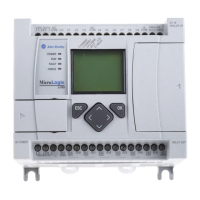
